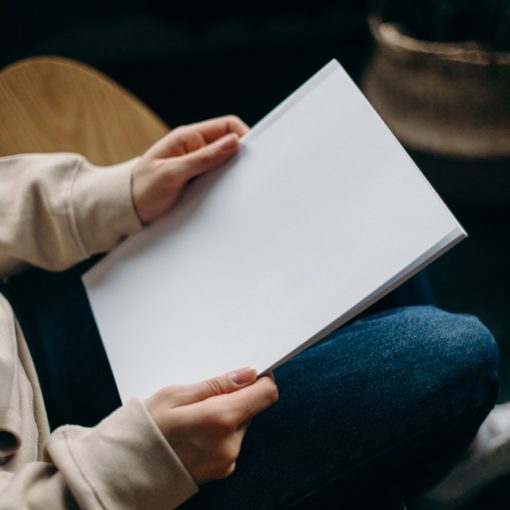
Line editing. By the time you get to it, you’ve probably already read through your draft at least a million times, if not a billion.
We all know that the millionth time you do anything, whether it’s drive to work or wash the dishes or kiss your spouse goodbye, you probably aren’t giving it your full attention. Chances are when you read your manuscript for a line edit, you are not really reading it, just staring at paper with a glazed expression and perhaps a little drool in the corner of your mouth while you think about what you’re going to watch on Netflix tonight.
Because line editing is one of the very most important stages of writing, and can make your book succeed or fail, you need to do something at this point to shake it up and turn off the autopilot.
Here are a few methods for getting a fresh look on the manuscript that have worked for me and other writers.
Distance
If you have the luxury of time, the best way to take a fresh look at a manuscript is to get distance from it. If you can afford to set your book aside for six months or even a year, I guarantee you will see it with new eyes. Whenever I read works that I’ve written awhile ago, published or not, I find all kinds of extra words and places where I could have said things better.
Unfortunately, this method is not always an option, what with deadlines, launch dates and the fast-paced world of online publishing, which is why we have . . .
The Backward Read
The backward read is exactly what it sounds like: You start at the last page of the manuscript and read it back to front. (Don’t actually read each sentence backward–start at the top of the page). In addition to forcing you to wake up and take notice, this method allows you look at the language alone, without context. Isolating the language like this allows for a very thorough line edit, because if you’ve done your job as a writer well, then even when you’re reading your draft for the millionth time, there will be places where you get swept up in the story and stop editing. Reading backwards fragments the story enough for you to look at the language objectively.
The Scramble
A different but related take on the backward method is what I like to call The Scramble, courtesy of Monica Enderle Pierce, which she introduced in her guest post here, The Tension Edit. (A note about the tension edit–I haven’t included it in this list of Writing Stages, but it would definitely fall under line editing. I’m a lover of killing two birds with one stone, so I tend to incorporate a tension edit into my general line edit.) The part of the tension edit I’m referring to here is where Monica, with the help of her young daughter, takes her entire manuscript and throws it around the room, until the pages are thoroughly scrambled. Then, she gathers them up in random order and starts editing page by page.
As you can imagine, while similar to The Backward Read, The Scramble has an added benefit of freeing the writer from the attachment to the words. I like to think of The Scramble as The Backward Read on steroids.
Hire an Editor
If the options above aren’t working for you, there’s no shame in hiring an editor to help with your line edit.
A couple of words of caution here. First, If you hire an editor for this stage of writing, you need to be certain that they understand exactly what you are hiring them for. This isn’t a copy edit or a proofread; you don’t want to make sweeping changes to plot or characters; you just want to make every single sentence in the book sound as good as it possibly can. Make sure that is clear upfront. Line editing goes by several different names so it could be easy for miscommunication to occur.
Next, be sure to hire an editor who really understands your genre and your personal style. You have a voice that is trying to come through in the writing, and the last thing you need is an editor to fragment that voice by imposing their own voice on portions of the writing. This is why line editing is so tricky; there is no right or wrong way to do it, but there are certainly results that sound better to the reader than others. A good line editor will work with the voice that is already in the writing to make it stronger. Give them a chapter or two before committing to the full manuscript, so you can be sure they will produce the results you want.
Write Better First
For some writers, language is the very reason they write, and by the time they reach this stage, there is little line editing to do because everything already sounds poetic and melodic and perfect.
Then there are writers like me, who focus more on the story and less on how it’s told. When I reach my line edit, there are still a lot of extra words and awkward sentences and unnecessary adverbs. I don’t regret this, but I do try to improve every time I draft, so that there is less and less to do when I line edit. The very process of line editing teaches me a lot about my bad habits, and I’m less likely to make the same mistakes in consecutive drafts.
Even if you hire an editor, they can only do so much. The broader your understanding of language, the better you will be able to write well in the first place, line edit your own work, and incorporate an editor’s suggestions.


